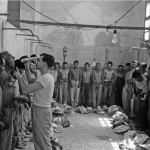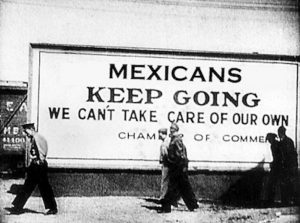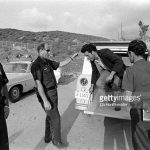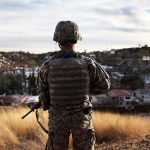History of the US-Mexico Border Policies
Pre-Bracero Program
From 1845 to 1942, the US-Mexico Border was not a terribly hot topic in American politics. In 1845, Texas was annexed to the United States and the grey area of border policies began, as Mexicans living in Texas gradually had to move back to their country. From this point on Mexican migrants were relied upon whenever labor became necessary, and it was relatively easy for them to get citizenship for much of the period. In 1924, the United States passed the Immigration Act, which was meant to limit immigrants to the United States, but due to necessity and good government relations Mexican immigrants were not barred from immigrating as others were. Perhaps the darkest moment for undocumented immigrants came during the Great Depression, when the United States deported thousands of Mexicans under the pretense of having them nicely "repatriated". This lead to a great deficit of migrant workers that lasted until the Bracero Program of 1942.
The Bracero Program
The Bracero program began in 1942 and lasted until 1965. The agreement's formal name was Mexican Farm Labor Program Agreement, and it was signed by both Mexican and American governments to legalize Mexican migrants crossing the border and control the flow of immigrants. The deal arose from the US's need for cheap labor after the Great Depression and WWII left them with a much smaller labor force. The program was a great answer to this problem, and allowed about 4.6 million Mexican field hands to come to America to work. Many faced social injustices such as discrimination, but it set a much better precedent for the legal immigration of Mexican citizens. Sadly these good times quickly came to an end.
While the Bracero program was widely positive for both Mexican and American society, there was an unfortunate backlash against the Mexican migrants by the US government. In 1954, the Immigration and Naturalization Service began Operation Wetback in response to the large groups of migrants that were not returning to Mexico after their temporarily allotted time in the US from the Bracero program had elapsed. Many children who were born in America were even falsely deported with their parents. This more cynical and derogatory view of latino migrant workers has unfortunately continued to modern times.
1960 to Clinton
The rough road continued for undocumented immigrants after Operation Wetback. In 1969, President Nixon signed Operation Intercept which truly locked down the US-Mexico Border for the first time. This law mandated random "surprise" checks of all things crossing the border from cars, to boats, to planes, and everything in between. After this act there was a slight decrease in enforcement of the border, but in 1993 Bill Clinton began somewhat of a major crackdown.
Clinton's first act with respect to the border resulted in a 13-mile long border wall, which cost 39 million dollars. The very optimistic prediction was that the rather short wall, compared to the almost 2,000 mile long border, would bring illegal crossing per day from 100,000 to just 5,000. This obviously was not the case as immigrants just found new ways through the border. The policies during the Clinton administration greatly increased the difficulty of crossing the border, and thus led to much higher death tolls. However, it was during George W. Bush's presidency after the 9/11 terrorist attacks that the border became the technologically advanced barrier we have today.
The Modern Border
Ever since the 9/11 terrorist attacks in 2001, securing the US's southern border became a much bigger issue than just immigration. It was considered a necessity for national security, and thus the budgets of all border control agencies increased exponentially. With all the new technology and money put towards securing the border, crossing illegally has become much harder for immigrants. This has led to our current state in which illegal crossings are down and so are apprehensions. However, this overall decrease has not held for number of border crossing deaths, which has sadly risen exponentially over this time period.
With the old "safe" routes for crossing the border illegally become more and more impenetrable, undocumented migrants seeking a better life have been forced to take bigger risks on their journey. These risks include relying on cartels, crossing more dangerous stretches of river, and braving the harsh conditions of the Arizona desert, nicknamed the "Corridor of Death". There must be a better way to manage the border, but Trump's current plans to build a wall certainly won't help lower the current exponentially high deaths tolls.
Further Reading
Brief History: A Timeline of the U.S. Border Wall : link
The Bracero Program : link
Article on the current state of the border: Newell Gomez & Guajardo:_Sensors Cameras & New Border
















